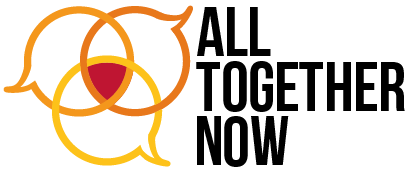From 1999 – 2009 I worked in state and federal public art galleries as a Senior Curator of Aboriginal and Torres Strait Islander Art, being the first Indigenous person to be appointed to these positions in the respective institutions. I was doing work that I was passionate about as it provided me with the privilege of working with Aboriginal and Torres Strait Islander artists around the country.
I was completely committed to my work, spending long hours during the week and on weekends to ensure that I met deadlines and facilitated space for my community. I oversaw numerous significant exhibitions, publications and associated public programs, which garnered extensive critical and popular recognition. I initiated, or was integral to the initiation of Indigenous staff traineeships and programs, and I developed extensive national and international networks, particularly with international Indigenous/First Nations colleagues.
Despite these achievements I encountered regular events of racism, covert and overt, such as suggestions that I had received ‘special’ treatment in securing positions, based on my Aboriginal heritage and not my significant capabilities. On one occasion, when in my first year at the National Gallery of Australia, I had to take sick leave after receiving concussion in a fall on black ice early one winter morning, following medical advice.
While on sick leave (with a medical certificate), a close friend and extremely talented member dancer/performer of the Indigenous community tragically took his own life. All of those who attended his funeral and memorial service in Sydney were devastated by the loss of our friend and brother, father to 3 young children. (The tragedy was multiplied when the man’s vibrant young daughter took her life in a similar manner in 2013 – an occurrence sadly all too common in our communities.)
When I returned to work a colleague informed me that my attendance at my friend’s funeral was discussed by another, previously respected colleague in the weekly curatorial meeting, who inferred that I was ‘on walkabout’, despite providing medical certificates and being on approved leave. I raised this with the colleagues but never received a response.
On another occasion at the same institution another senior curatorial colleague asked me in front of work colleagues including the Gallery Director, to define the term ‘Indigenous’. Without letting me reply, she queried if it meant ‘backward or minority’, further stating that Asia did not have any Indigenous people. Taken aback I made it clear that I considered her manner and question highly offensive as well as ignorant. I made reference to the Ainu peoples of Japan, Taiwan’s Indigenous community and the distinct Indigenous peoples of India, as being but a few of the many Indigenous nations that exist throughout the countries that comprise Asia.
I realised that she had challenged me in response to my proposal that a new position be established in line with other curatorial departments at the Gallery. The Head of Indigenous Art could oversee a department that encompassed not only Australia, but also Indigenous material from Pacific and Asian regions, and the northern hemisphere that were held in the national collection in line with following correct cultural protocols relating to the care and presentation of Indigenous material culture.
My colleague’s comments were not challenged by the Director, which was extremely disappointing. Later, at a separate meeting with the Director I was chided for taking my colleague’s comments ’so personally’ and that I should not have taken offence, that I had been unnecessarily sensitive. I wonder how else I should have taken the suggestion that I was personally ‘backward’ and/or a ‘minority’? I reminded the Director that my colleague was a senior university lecturer of Asian Art and Culture at the ANU, which raised the query about what information she imparted to her students about Asian cultures.
I had many positive experiences during my tenure – I was strongly supported in exhibition proposals, publications, public programs and Indigenous staff development, but this did not undo the underlying culture of the organisation – Indigenous concerns and issues raised by Indigenous staff were often dismissed rather than addressed as a whole of Gallery commitment. Multiple events caused emotional fatigue and I made the choice to leave the organisation rather than continue to work with ingrained bigotry being unchallenged by senior staff, who could have led by example.
Until Indigenous people’s concerns are seriously addressed and officially acted upon as policy – not because it ‘feels good’ to humour us; until we see proper change embraced and enacted upon by non–Indigenous people to ensure equitable involvement, inclusion and representation, then any espousal of ‘reconciliation’ is mere superficial lip service. Indigenous people have seen myriad examples of empty words and meaningless symbolic gestures since 1788; surely our society deserves more in 2015.
Story written by Brenda in her own words.
